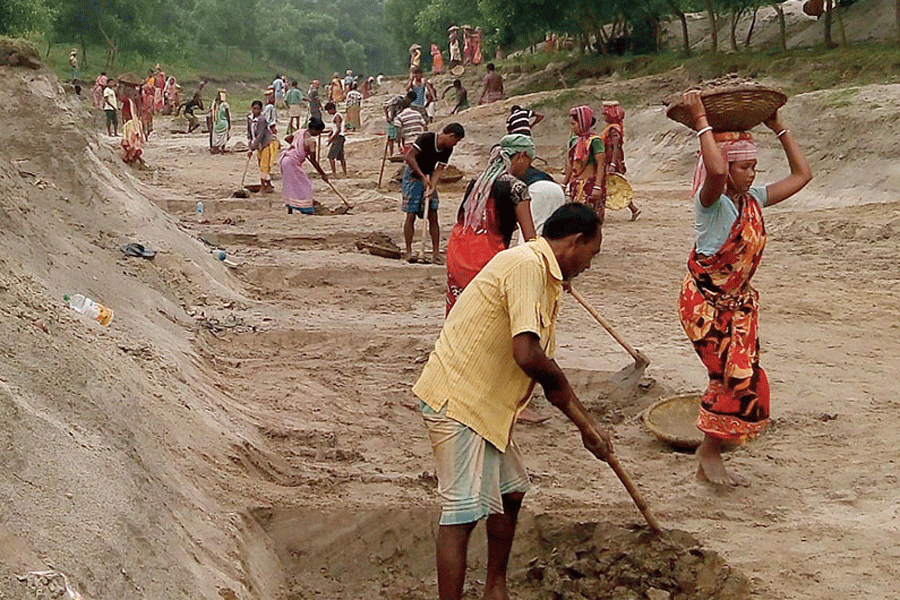The Union government has revised the state-wise per-day wage rate for workers under the Mahatma Gandhi National Rural Employment Guarantee Act (MGNREGA) but the rates remain lower than the minimum wage notified by many states, including Bengal.
The ministry of rural development (MoRD) on Wednesday notified the new rates for 2024, revising the rates by 3 to 10 per cent. According to the new rates, a worker in Bengal will get Rs 250 for a day’s work, up from Rs 237. The hike has been minimal in Uttar Pradesh and Uttarakhand where a worker will get Rs 237 a day, up from Rs 230.
However, a comparison with the minimum wage notified by states shows that a worker under the MGNREGA will get a lesser wage than what has been notified as minimum wage in the states of Bengal, Bihar, Jharkhand, Madhya Pradesh, Karnataka, Rajasthan, Assam and Haryana (see chart).
Social activists termed it “illegal”. They said workers would not be able to maintain minimum living standards by the poor hike in wages under the MGNREGA, a welfare measure that provides for up to 100 days of unskilled work to every rural household in a year.
Nikhil Dey, who works with Mazdoor Kishan Shakti Sangathan in Rajasthan on the implementation of the MGNREGA, said the minimum wage remaining lower than the state minimum wage meant denial of basic standard of living to the MGNREGA workers.
He said an official committee on minimum wage under economist Anoop Satpathy in 2018 recommended that workers in the country engaged in any kind of work should not get less than Rs 375 per day at 2018 price level. The Congress has already announced that if it comes to power, it will increase the MGNREGA wage rate so that no worker gets less than Rs 400 a day.
“The government servants get a hike of 10 per cent. But the MGNREGA workers get three per cent,” Dey said.
An expert committee under Mahendra Dev — an economist — had recommended that the MGNREGA rate could not be lower than the state minimum wage for agricultural workers. However, the central government has not implemented the report.
According to the MGRNEGA, the wage for each state is revised every year from April 1 by indexing it according to the Consumer Price Index for Agricultural Labourers (CPIAL). The CPIAL captures inflation based on the consumption of farm workers. The CPIAL gives more weightage to food consumption whose rates largely remain unchanged because of subsidies provided by the government. Hence the CPIAL hovers between zero and seven per cent in states, said an official of the rural development ministry.
Dey said the MoRD should follow the Consumer Price Index for Rural Labourers (CPIRL) in place of CPIAL to determine the wage rates.











